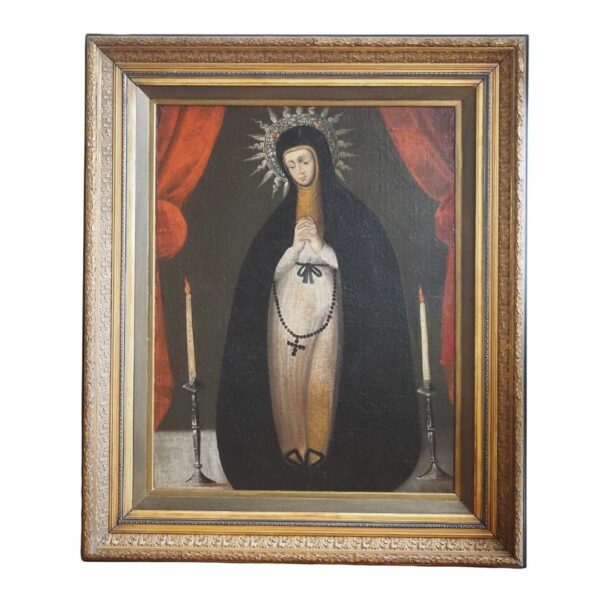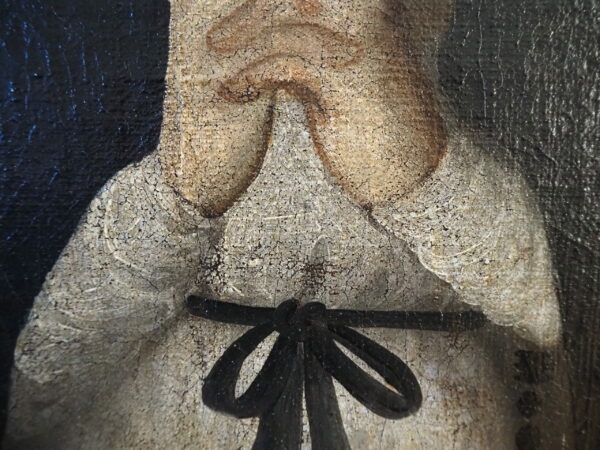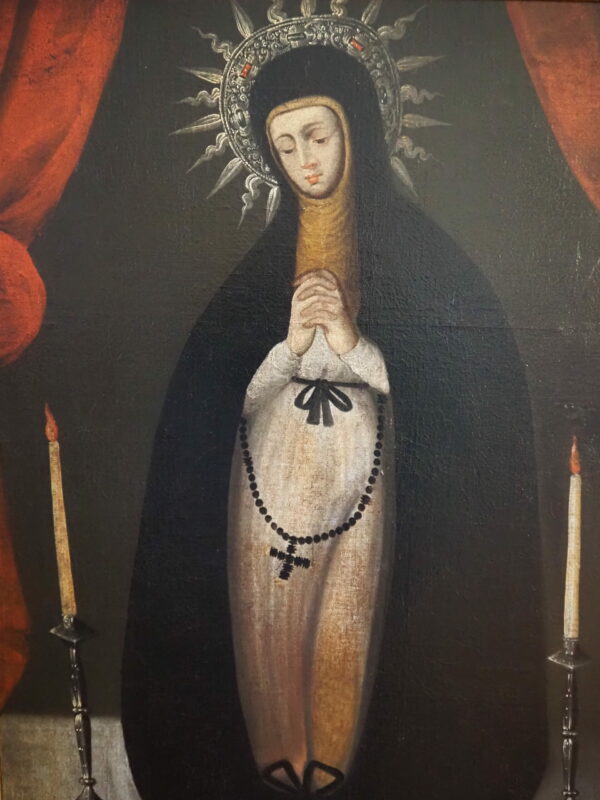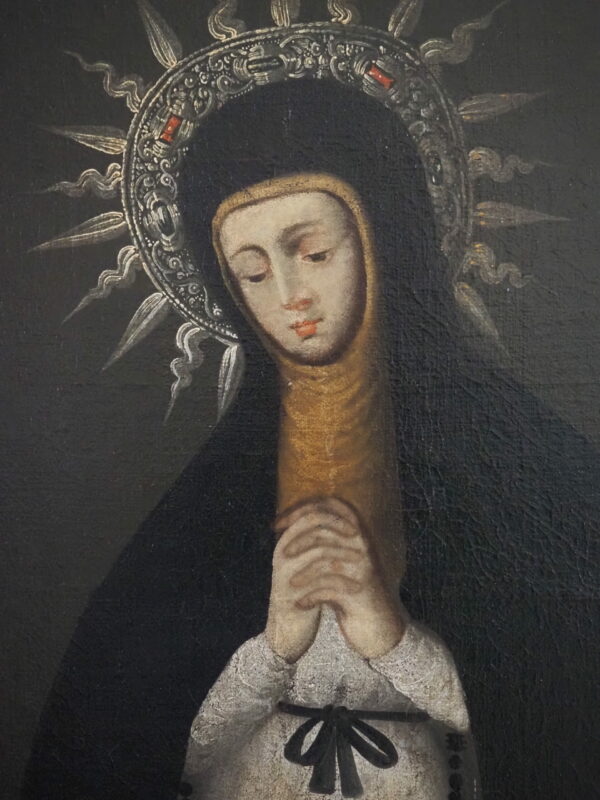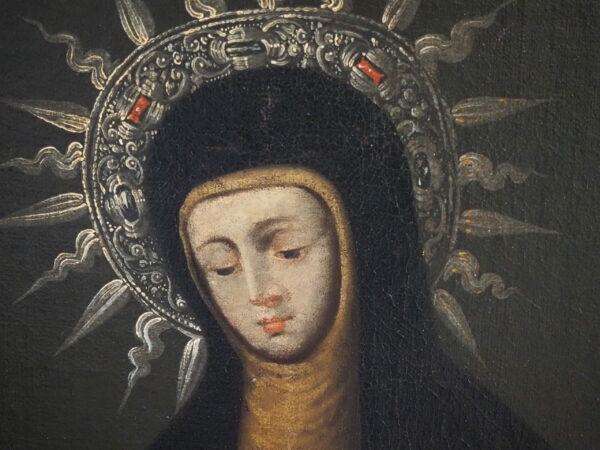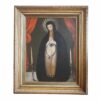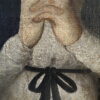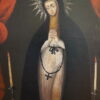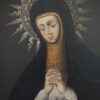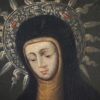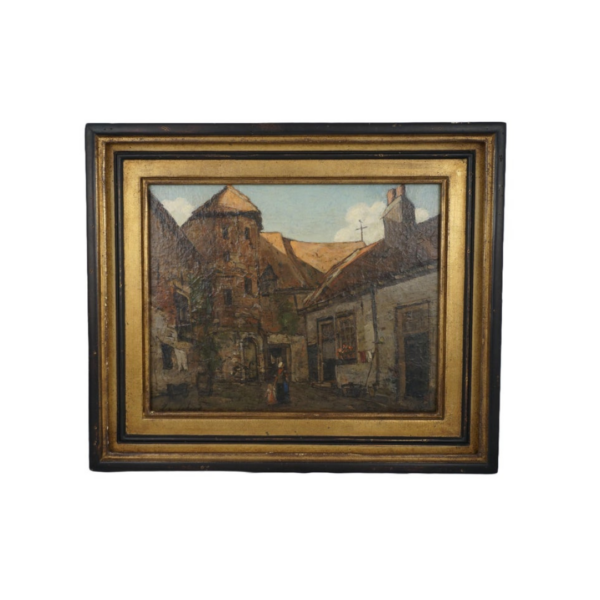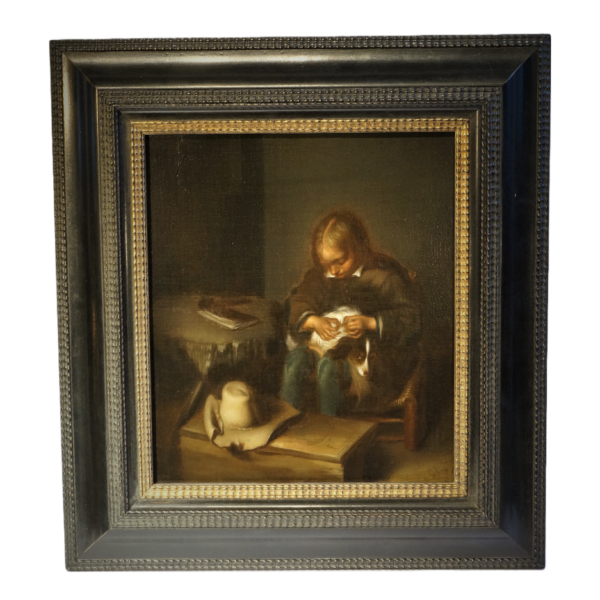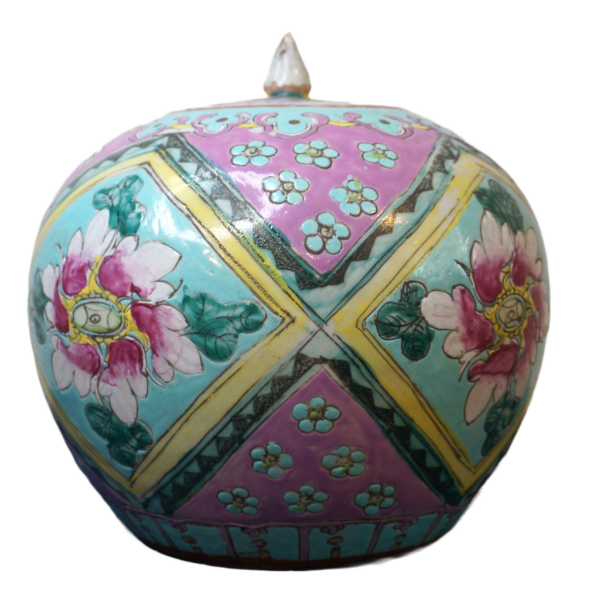Beschrijving
Spaanse koloniale school, 18e eeuw
Our Lady of Solitude
Olieverf op doek
In antique gilt frame
Dimensions excl. frame: 92 x 72 cm.
Dimensions incl. frame: 124 x 103.5 cm.
Overall in good condition
Prijs op aanvraag
Nuestra Señora de la Soledad, or Our Lady of Solitude, is a significant figure in colonial art, particularly within the context of Spanish and Mexican traditions. This Marian image has deep roots in both religious devotion and artistic representation.
Historical Background
The veneration of Our Lady of Solitude can be traced back to the 17th century. The most notable image associated with this title is Nuestra Señora de la Soledad de Porta Vaga, which originated in Cavite, Philippines, in 1667. According to local lore, a sentinel witnessed a vision of a woman dressed in black, which led to the discovery of a painting depicting the Virgin Mary in mourning attire. This image has since become an object of deep devotion and is celebrated for its miracles and intercessions.
Artistic Characteristics
The colonial paintings of Our Lady of Solitude often depict the Virgin Mary dressed in black mourning garments, known as ‘de luto.’ This attire symbolizes sorrow and reflects the Virgin’s grief over the Passion of Christ. The imagery typically includes elements such as:
Articulated Arms: Many representations feature movable arms, allowing for varied postures during processions.
Symbolic Colors: The use of black signifies mourning, while white and red details may represent purity and sacrifice.
Iconography: Common motifs include candles and instruments of the Passion, emphasizing her role in the narrative of Christ’s suffering.
Cultural Significance
In the Philippines, the devotion to Our Lady of Soledad has grown immensely over time. The image was declared a National Cultural Treasure in 2017 and has been canonically crowned by Pope Francis. It embodies a blend of local traditions and Spanish influences, making it a focal point for community gatherings and religious festivities.
Artistic Variations
In addition to the Philippine depictions, various colonial paintings from Mexico and Spain portray Our Lady of Solitude. For example:
Spanish Colonial Paintings: These often date back to the 18th century and feature rich iconography that reflects both Spanish artistic styles and local devotional practices.
Mexican Bultos: Early 20th-century representations include bulto sculptures that capture the essence of the Virgin in three-dimensional form.

